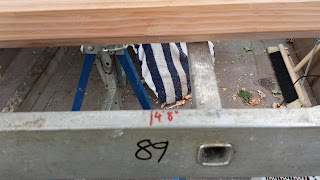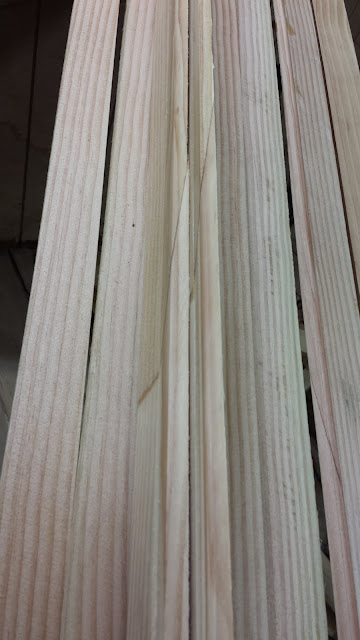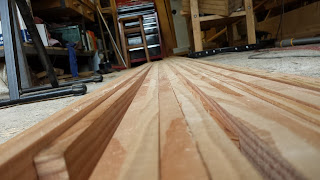Today the planing was more successful, accompanied by several trips to the Japanese Waterstones. The plane worked effortlessly taking of shavings some of which were 3 foot long! (Is this a record?!!)
The bulk of the work was getting the taper down to the required dimensions - once that was accomplished, rounding the octagonal shape to 16 sides and then round went very quickly. Which serves as a useful lesson to other builders contemplating using a compound taper - it's a lot of extra work.
I did have some issues with different staves having its grain in opposite directions each side of the scarf joint, which meant I had to reverse the planing direction. I found that the #6 Foreplane worked well when pulled, Japanese style, which allowed me use different muscles rather than just pushing all the time.
Using my spar calipers, I made sure that the diameter was uniform at each station. Also, I kept the octagonal shape, which made for more consistent planing. I was even tempted to leave the mast finished in octagonal form - I really like that shape...throwback to my early days with split cane fly fishing rods....
I decided not to reduce the diameter down to the final dimension at the top quarter of the mast, as I was nervous that the extra planing would remove too much of the birdsmouth joint. However since the mast was coming out so relatively light, I didn't feel that this would be a handicap.
 |
| Bottom of mast showing internal plug made also birdsmouth style |
I recall reading on some forum where it was suggested to keep planing until you are finished or bored...I think i took the latter route, but nevertheless, I now have a nice 23' spar hanging diagonally from the ceiling of my 20' x 20' workshop. Phew!!



































